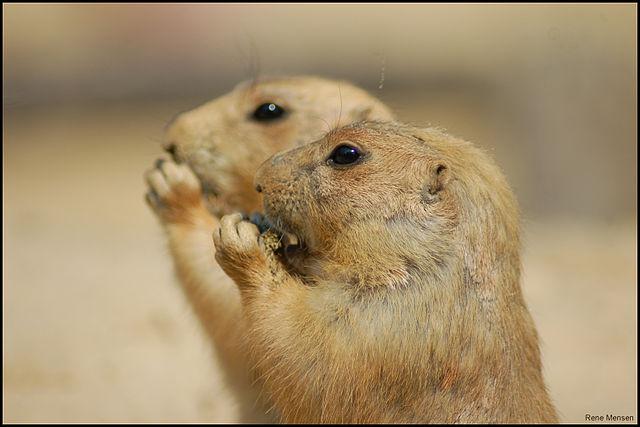Prairie dogs could be saviors of Mexico’s former prairies
Prairie dogs are important to the grassland ecosystem because they destroy the invasive plant, mesquite. (Photo by Rene Mensen via Wikimedia Commons.)
Cattle ranching spread across North American prairies in the 1800s, stretching from Canada to Mexico. But as the ranchers moved in, the black-tailed prairie dogs were forced out.
Gerardo Ceballos, an ecologist at the National Autonomous University of Mexico, says about 30 billion prairie dogs used to live in the grasslands.
But ranchers believed prairie dogs competed with their cattle for grass and the prairie dog burrows were causing cows and horses to break their legs. Enough ranchers were convinced the prairie dogs were a problem and got U.S. government support to use a nerve toxin, which Ceballos says causes convulsion and a lung and heart failure, in the animals’ burrows.
“By poisoning and then by the advance of agriculture. It has been one of the most dramatic, drastic exterminations of an animal by humans,” he said.
The toxin killed billions of prairie dogs, Ceballos said, and in 50 to 60 years, prairie dogs were eradicated from 98 percent of the area they used to live in. The prairies were transformed into deserts; a shrub called mesquite took over.
Prairie dogs aren’t attracted to the plant and because mesquite blocks their view when the stand on their hind legs, they try to get rid of it any way possible. Mesquite has deep roots that suck up water and attract small animals that eat the grasses around the mesquite.
Without the prairie dogs to play gardener, the mesquite turned the prairie into a scrubland, making it unusable for the ranchers.
“You lose the ability of this landscape to maintain wildlife and plants. But also the scrubland is not good for cattle,” he said.
In the summer of 1987, Ceballos and his wife were driving back to Mexico through the former grasslands in Chihuahua, Mexico. But as they drove, Ceballos said they saw grasslands waving in the wind with multitudes of prairie dogs.
“Then the next day we saw badgers. Badgers are very rare in Mexico. Golden eagles are also very rare in Mexico, and we saw more than 20 there in one single day,” he said. “It hit me immediately, the idea that prairie dogs should have some role.”
In the last 20 years, Ceballos has shown the prairie dog’s importance. The small mammals, food for predators like coyotes and hawks, depend on grasslands for protection. Within a year of reintroducing prairie dogs to scrubland, they’d removed most of the mesquite and restored an environment that’s conducive to wildlife.
“A good scientist has to do good research, but then has to translate it into action. There is no way that we can continue just being like historians — recording all the things that we are losing, instead of becoming actors,” he said. “Now, my main objective in life is to save as many species of plants and animals as I can.”
We want to hear your feedback so we can keep improving our website, theworld.org. Please fill out this quick survey and let us know your thoughts (your answers will be anonymous). Thanks for your time!
